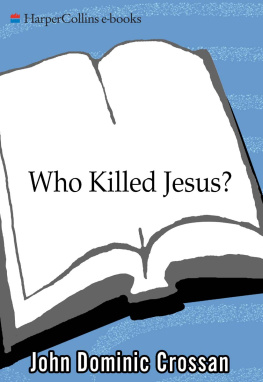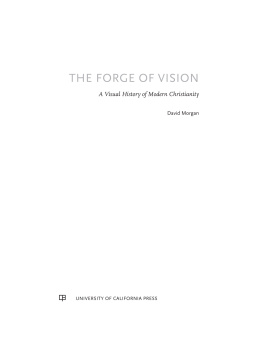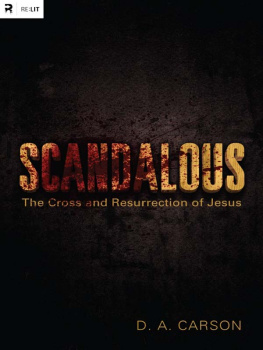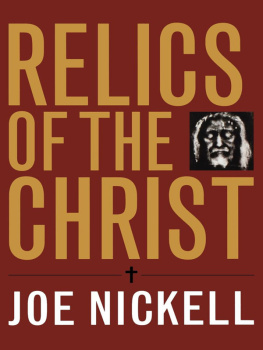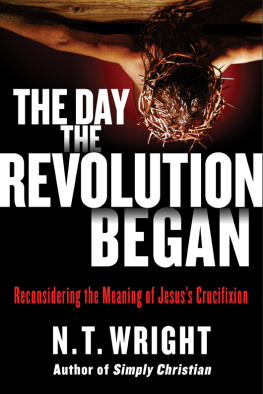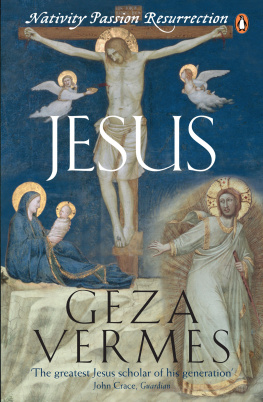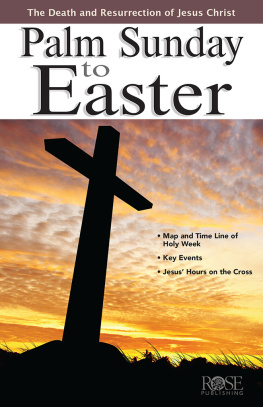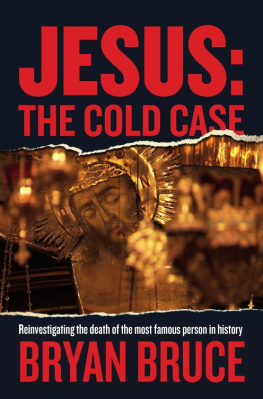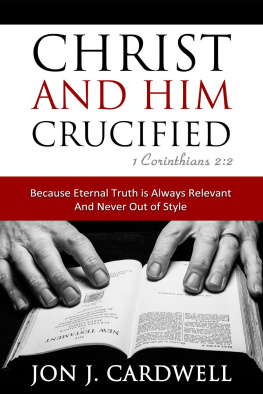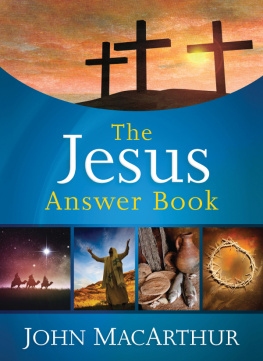Anti-Semitism means six million Jews on Hitlers list but only twelve hundred Jews on Schindlers list. This book is about anti-Semitism, not, however, in its latest European obscenity, but in its earliest Christian latency. It is about the historicity of the passion narratives, those terribly well-known stories about Jesus arrest and trial, abuse and crucifixion, burial and resurrection. It is about the accuracy and honesty of Christian scholarship in its best reconstruction of those ancient yet ever-present events. Biblical exegesis and historical analysis may often seem but distant murmurs from an ivory tower. Why should ordinary people care about discussions and debates among scholars? Two examples, one very small and one very large, indicate why the historicity of the passion narratives is not a question just for scholars and experts but for anyone with a heart and a conscience.
In the gospel of Mark, Jesus is tried by both a Jewish and a Roman tribunal, and each juridical process concludes with physical abuse and mockery. After the Jewish trial in Mark 14:65, some began to spit on him, mocking him as a pseudo-prophet. After the Roman trial in Mark 15:19, the soldiersspat upon him, mocking him as a pseudo-king. If you are being scourged and crucified, being spat upon or even slapped may seem a very minor indignity and hardly worth consideration then or now. But, as Father Raymond E. Brown, S.S., notes in his recently published The Death of the Messiah: From Gethsemane to the GraveA Commentary on the Passion Narratives in the Four Gospels , those mockeries were recalled by the Passiontide ceremony in the 9th11th cents, in which a Jew was brought into the cathedral of Toulouse to be given a symbolic blow by the countan honor! (575 note 7). No Roman, one notices, was accorded a like honor.
Brown insists that his commentary will not ignore the ways in which guilt and punishment for the crucifixion of Jesus have been inflicted on Jews by Christians, not the least in our own times (7). Yet, despite that statement and a long section on anti-Judaism (38397), the best he can say about the historicity of those twin spittings is this: At the Jewish trial, Such abuse is not at all implausible historically (586). At the Roman trial, There is no way of knowing whether this happened historically; at most one can discuss the issue of verisimilitude. The content of what is described in the Gospels about the Roman mockery is not implausible, whether historical or not (874, 877). Is that really the best that historical scholarship can offer?
It is not a question of certitude, a word that Brown uses regularly to avoid final decision: there are severe limitations imposed by method and matter in our ability to acquire certitude about that history. Certitude about the historicity of details is understandably infrequent (22). Or again: Absolute negative statements (e.g., the account has no historical basis) most often go beyond the kind of evidence available to biblical scholars (1312). But historical scholarship is not called to absolutes or to certitudes but only to its own best reconstructions given accurately, honestly, and publicly. Even in our courts, with life and death in the balance, our best judgments are given beyond a reasonable doubt. We seldom get to beyond any doubt. But, in the end, judgments must be made, and most historical reconstructions are based on this is more plausible than that rather than this is absolutely certain or that is absolutely wrong. None of this allows us to hedge or to fudge or to hide behind double negatives like not implausible or not impossible. Who Killed Jesus? shows how we can get beyond that impasse by beginning, for example, with a biblical text like this:
I gave my back to those who struck me, and my cheeks to those who pulled out the beard; I did not hide my face from insult and spitting. (Isaiah 50:6)
Does the abuse of Jesus come from history remembered, or from prophecy historicized? Does it come from Christians investigating their sources to know what happened as historical event, or does it come from Christians searching their Scriptures to create what happened as prophetic fulfillment?
Consider that small spitting or slapping scene from Mark, and widen it into the following far more terrible scene:
When Pilate saw that he could do nothing, but rather that a riot was beginning, he took some water and washed his hands before the crowd, saying, I am innocent of this mans blood; see to it yourselves. Then the people as a whole answered, His blood be on us and on our children! (Matthew 27:2425)
Brown is, once again, very aware of the latent anti-Semitism in that passage. In commenting on this passage, one cannot ignore its tragic history in inflaming Christian hatred for Jews (831), and he agrees (I presume) with a quotation that describes it as one of those phrases which have been responsible for oceans of human blood and a ceaseless stream of misery and desolation (831 note 22). Yet he can go on to describe it as the most effective theater among the Synoptics, outclassed in that respect only by the Johannine masterpiece (832), and his best historical judgment is that it is a Matthean composition on the basis of a popular tradition reflecting on the theme of Jesus innocent blood and the responsibility it created. There may have been a small historical nucleus; but the detection of that nucleus with accuracy is beyond our grasp (833). I ask, once again, is that the best we can do? Who Killed Jesus? proposes a flat alternative to Browns The Death of the Messiah and argues that we can and must do much better. If, in my smaller example, we must assess the role of prophecy in creating history, we must, in this larger one, assess equally the role of apologetics and polemics in continuing and expanding that creation.
Here is the question at the heart of my book. Jesus stands before a Roman governor who declares him innocent and wants him released while a Jewish crowd declares him guilty and wants him crucified. The crowd wins. Is that scene Roman history, or Christian propaganda? When I am speaking of those first centuries, by the way, I use terms like Christians or Christianity exactly as I would use terms such as Essenes, Pharisees, Sadducees , or Zealots . These are groups with different and differing Jewish options about the best vision, program, and leadership for the Jewish future in a very dangerous age. History or propaganda, then, that is the question. It will take my entire book to answer it adequately, but, here to conclude the preface, I present two passages that appear later in the book to emphasize their importance:
For Christians the New Testament texts and the gospel accounts are inspired by God. But divine inspiration necessarily comes through a human heart and a mortal mind, through personal prejudice and communal interpretation, through fear, dislike, and hate as well as through faith, hope, and charity. It can also come as inspired propaganda, and inspiration does not make it any the less propaganda. In its origins and first moments, that Christian propaganda was fairly innocent. Those first Christians were relatively powerless Jews, and compared with them the Jewish authorities represented serious and threatening power. As long as Christians were the marginalized and disenfranchised ones, such passion fiction about Jewish responsibility and Roman innocence did nobody much harm. But, once the Roman Empire became Christian, that fiction turned lethal. In the light of later Christian anti-Judaism and eventually of genocidal anti-Semitism, it is no longer possible in retrospect to think of that passion fiction as relatively benign propaganda. However explicable its origins, defensible its invectives, and understandable its motives among Christians fighting for survival, its repetition has now become the longest lie, and, for our own integrity, we Christians must at last name it as such.

